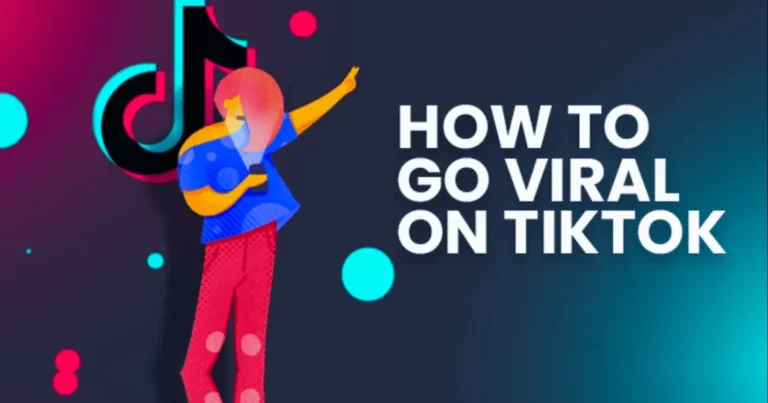Viral Identity Framework: Boost Your Brand’s Reach

Contents
- 1 What Is the Viral Identity Framework?
- 2 Why the Viral Identity Framework Matters
- 3 The Core Components of the Viral Identity Framework
- 4 How to Implement the Viral Identity Framework
- 5 Case Studies: Brands That Nailed the Viral Identity Framework
- 6 Common Mistakes to Avoid
- 7 Tools to Support Your Viral Identity Framework
- 8 The Future of the Viral Identity Framework
In today’s fast-paced digital world, the viral identity framework offers a powerful blueprint for brands aiming to capture attention and spread rapidly across platforms. This strategic approach combines psychology, storytelling, and data-driven tactics to craft a brand identity that resonates deeply with audiences, encouraging them to share it organically. Whether you’re a startup or an established business, understanding how to leverage this framework can transform your brand’s reach and impact. Consequently, this article explores the viral identity framework in detail, providing actionable insights to help you build a brand that thrives in the digital age.
What Is the Viral Identity Framework?
The viral identity framework is a structured approach to creating a brand identity that naturally encourages sharing and engagement. Unlike traditional branding, which focuses on consistency and recognition, this framework prioritizes elements that trigger emotional connections and social amplification. By blending authenticity, relatability, and shareability, it ensures your brand resonates with audiences on a deeper level. Moreover, it incorporates data-driven insights to maximize reach across digital platforms.
At its core, the framework revolves around three pillars: emotional resonance, cultural relevance, and shareable design. These pillars work together to create a brand identity that feels personal yet universal, sparking conversations and driving organic growth. For instance, brands like Nike and Apple have mastered this by aligning their messaging with cultural moments and human emotions, making their campaigns inherently shareable.
Why the Viral Identity Framework Matters
In an era where attention spans are shrinking, standing out requires more than a catchy slogan or sleek logo. The viral identity framework matters because it taps into the psychology of why people share content. According to studies, 94% of viral content succeeds due to emotional triggers like awe, amusement, or inspiration. By focusing on these triggers, the framework helps brands create content that audiences can’t resist sharing.
Additionally, the framework aligns with modern marketing trends. Social media platforms like Instagram, TikTok, and X thrive on user-generated content and organic reach. Therefore, a brand built on the viral identity framework can capitalize on these platforms’ algorithms, which prioritize engaging, shareable content. As a result, businesses can achieve exponential growth without relying solely on paid advertising.
The Core Components of the Viral Identity Framework
To implement the viral identity framework effectively, you need to understand its key components. Below, we break down the essential elements and how they contribute to building a viral brand.

1. Emotional Resonance: Connect on a Human Level
Emotion is the heartbeat of the viral identity framework. People share content that makes them feel something—whether it’s joy, nostalgia, or empathy. To create emotional resonance, your brand must tell stories that align with your audience’s values and experiences.
For example, Dove’s “Real Beauty” campaign went viral because it tapped into universal feelings of self-worth and acceptance. By showcasing real women instead of models, Dove created a narrative that felt authentic and relatable. To achieve this, identify your audience’s core emotions and craft messaging that speaks directly to those feelings. Tools like audience surveys and social listening can help you uncover these insights.
2. Cultural Relevance: Ride the Wave of Trends
A viral brand stays relevant by aligning with cultural moments and trends. The viral identity framework emphasizes staying in tune with what’s happening in your audience’s world—whether it’s a social movement, a meme, or a global event. However, relevance doesn’t mean chasing every trend. Instead, it’s about finding intersections between your brand’s values and the cultural zeitgeist.
Take Wendy’s, for instance. Their witty, trend-savvy social media presence has made them a viral sensation on platforms like X. By engaging in playful banter and referencing pop culture, Wendy’s stays relevant while reinforcing its bold brand identity. To do this, monitor platforms like X for real-time trends and adapt your content to fit naturally within those conversations.
The viral identity framework thrives on content that’s easy to share. This includes visually appealing designs, memorable taglines, and formats optimized for social media. For instance, short-form videos on TikTok or eye-catching infographics on Instagram are more likely to be shared than lengthy text posts.
To maximize shareability, focus on creating content that’s concise, visually striking, and platform-specific. For example, a 15-second video with bold visuals and a clear call-to-action is more likely to go viral than a static image. Additionally, include interactive elements like polls or quizzes to encourage engagement. Tools like Canva or Adobe Spark can help you create shareable assets quickly.
4. Authenticity: Build Trust and Credibility
Authenticity is non-negotiable in the viral identity framework. Audiences can spot inauthenticity from a mile away, and it can damage your brand’s reputation. To build trust, ensure your messaging aligns with your brand’s values and mission. Avoid jumping on trends that don’t fit your identity, as this can come across as forced.
Patagonia is a prime example of authenticity in action. Their commitment to environmental sustainability is woven into every campaign, making their brand both credible and shareable. To emulate this, create content that reflects your brand’s true purpose and resonates with your audience’s values.
How to Implement the Viral Identity Framework
Now that you understand the components, let’s explore how to put the viral identity framework into action. Below are practical steps to help you build a brand that spreads like wildfire.

Step 1: Define Your Brand’s Core Story
Every viral brand has a compelling story at its heart. Your story should answer three questions: Who are you? What do you stand for? Why should people care? For example, Airbnb’s story of “belonging anywhere” resonates because it taps into the universal desire for connection and adventure.
To craft your story, start by identifying your brand’s mission and values. Then, translate these into a narrative that’s simple, emotional, and relatable. Use storytelling frameworks like the hero’s journey to structure your message. For instance, position your audience as the hero and your brand as the guide that helps them overcome challenges.
Step 2: Know Your Audience Inside Out
The viral identity framework relies on a deep understanding of your target audience. Use tools like Google Analytics, social media insights, and surveys to gather data on their demographics, interests, and behaviors. For example, if your audience is Gen Z, prioritize platforms like TikTok and focus on short, humorous content.
Additionally, create audience personas to guide your content creation. These personas should include details like age, location, pain points, and preferred platforms. By tailoring your content to these personas, you increase the likelihood of creating something shareable.
Step 3: Create Content That Sparks Conversation
Viral content often sparks dialogue, whether through humor, controversy, or inspiration. To achieve this, focus on creating content that invites interaction. For instance, ask open-ended questions in your social media posts or create challenges that encourage user participation, like the ALS Ice Bucket Challenge.
Moreover, leverage user-generated content (UGC) to amplify your reach. Encourage followers to share their own stories or experiences related to your brand. For example, Starbucks’ #RedCupContest encourages customers to share creative photos of their holiday cups, generating massive engagement.
Step 4: Optimize for Each Platform
Each social media platform has unique characteristics, and the viral identity framework accounts for this. For instance, Instagram favors high-quality visuals, while X thrives on concise, witty text. To maximize impact, tailor your content to each platform’s strengths.
Here’s a quick guide:
- Instagram: Use stunning visuals, Stories, and Reels to showcase your brand’s personality.
- TikTok: Create short, engaging videos with trending audio or challenges.
- X: Share quick, witty posts that spark conversation or tap into trending topics.
- LinkedIn: Focus on thought leadership and professional insights.
Use platform-specific analytics to track performance and refine your strategy over time.
Step 5: Measure and Iterate
The viral identity framework isn’t a one-and-done strategy. To stay effective, you must measure your results and adapt. Use metrics like engagement rate, shares, and reach to gauge your content’s performance. Tools like Hootsuite or Sprout Social can help you track these metrics across platforms.
If a campaign doesn’t perform as expected, analyze what went wrong. Was the emotional appeal off? Did the content feel inauthentic? Use these insights to refine your approach and experiment with new ideas. Over time, this iterative process will help you perfect your viral identity.
Case Studies: Brands That Nailed the Viral Identity Framework
To illustrate the power of the viral identity framework, let’s look at three brands that have successfully applied its principles.

1. Nike: Inspiring Through Emotion
Nike’s “Just Do It” campaign is a masterclass in emotional resonance. By focusing on themes of perseverance and self-belief, Nike creates ads that inspire and motivate. Their campaigns often feature real athletes and relatable stories, making them highly shareable. For example, their Colin Kaepernick ad sparked global conversations, aligning with cultural moments and driving viral engagement.
Old Spice reinvented its brand with the “The Man Your Man Could Smell Like” campaign. By combining humor, absurdity, and shareable video content, Old Spice captured the internet’s attention. Their videos were short, memorable, and optimized for platforms like YouTube, resulting in millions of shares and views.
3. Glossier: Authenticity and Community
Glossier’s success lies in its authentic, community-driven approach. By featuring real customers and encouraging UGC, Glossier created a brand that feels personal and relatable. Their minimalist aesthetic and focus on inclusivity align perfectly with millennial and Gen Z values, making their content highly shareable.
Common Mistakes to Avoid
While the viral identity framework is powerful, it’s easy to make mistakes. Here are some pitfalls to watch out for:
- Chasing Trends Blindly: Jumping on every trend can dilute your brand’s identity. Focus on trends that align with your values.
- Ignoring Data: Without analytics, you’re flying blind. Use data to guide your content creation and measure success.
- Forgetting Authenticity: Inauthentic content can backfire, damaging your reputation. Always stay true to your brand’s mission.
- Overcomplicating Content: Viral content is simple and digestible. Avoid overly complex messaging that confuses your audience.
Tools to Support Your Viral Identity Framework
To implement the viral identity framework effectively, leverage these tools:
- Canva: Create stunning visuals for social media.
- Google Trends: Identify trending topics and keywords.
- Hootsuite: Manage and analyze your social media campaigns.
- BuzzSumo: Discover viral content ideas and influencers.
- Grammarly: Ensure your messaging is clear and professional.
The Future of the Viral Identity Framework

As digital platforms evolve, so will the viral identity framework. Emerging technologies like AI, augmented reality (AR), and virtual reality (VR) are creating new opportunities for viral branding. For example, AR filters on Instagram and Snapchat allow brands to create interactive, shareable experiences. Similarly, AI-powered tools can analyze audience behavior in real-time, helping brands stay ahead of trends.
Moreover, the rise of decentralized platforms and Web3 technologies may shift how brands approach virality. By embracing these innovations, businesses can stay at the forefront of the viral identity framework and continue to captivate audiences.
Conclusion
The viral identity framework is a game-changer for brands looking to stand out in a crowded digital landscape. By focusing on emotional resonance, cultural relevance, shareable design, and authenticity, you can create a brand that spreads like wildfire. Start by defining your brand’s story, understanding your audience, and creating content that sparks conversation. Then, optimize for each platform, measure your results, and iterate based on data. With the right approach, the viral identity framework can help you build a brand that not only captures attention but also inspires action.






